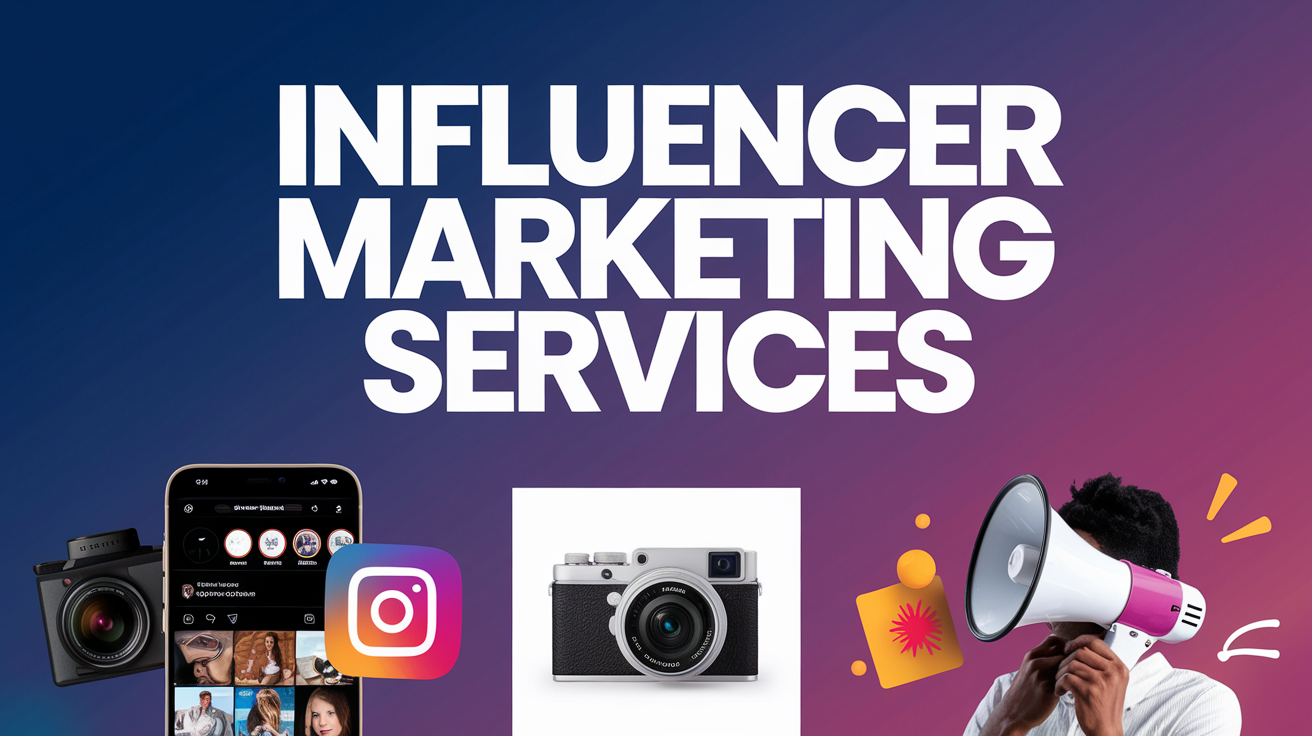Influencer Marketing
Introduction to Influencer Marketing
Influencer marketing is a digital strategy where brands partner with influential personalities to promote products or services. With consumers becoming more skeptical of traditional ads, influencer marketing offers an authentic way to reach audiences.
One of the most successful digital marketing techniques in recent times has been influencer marketing. It calls for working with people who have a large online presence and a loyal audience to advertise goods, services, or brand messages. Unlike old fashioned advertising, influencer marketing uses the trust and credibility influencers have developed with their followers, hence boosting conversions and engagement levels.
The growth of influencer marketing has been driven by the emergence of social media sites including Twitter, YouTube, TikTok, and Instagram. Firsthand recommendations from everyday people are what consumers are more and more after as opposed to typical ads. Companies that well use influencer marketing can greatly improve their reach, credibility, and consumer loyalty.
One of the most important advantages of influencer marketing is its capacity to create legitimacy and honesty. Consumers will trust advice from people they follow and respect more. In contrast to celebrity endorsements, influencers usually have a more personal link with their audience, so their endorsements seem sincere rather than planned advertisements. This trust helps the brand to be seen more credibly and enable customers to be more confident.
Types of Influencers
Mega Influencers
These influencers have over 1 million followers. They include celebrities and global icons who can provide massive reach but come at a high cost.
Macro Influencers
They have between 100K-1M followers. They are often industry experts or content creators with an established presence.
Micro Influencers
Micro influencers have between 10K-100K followers. They offer higher engagement rates and are trusted by their audience.
Nano Influencers
Nano influencers have less than 10K followers but have deeply engaged communities, making them ideal for niche markets.
The Benefits of Influencer Marketing
Increased Brand Awareness
Influencers help expose your brand to a broader audience, making potential customers aware of your products.
Higher Engagement Rates
People trust recommendations from influencers they follow, leading to better interaction and engagement.
Authentic Content Creation
Influencers create unique and relatable content that resonates with their audience, benefiting the brand.
Improved SEO and Online Presence
Collaborations with influencers increase brand mentions and website traffic, improving search engine rankings.
How to Choose the Right Influencer
Defining Your Goals
What do you want to achieve? More sales, brand awareness, or engagement?
Identifying Your Target Audience
Choose influencers whose followers match your target demographic.
Evaluating Influencer Credibility
Analyze their past collaborations, audience engagement, and authenticity.
Engagement vs. Follower Count
A smaller, highly engaged audience is often more valuable than a large but inactive follower base.

Platforms for Influencer Marketing
Ideal for lifestyle, fashion, and beauty brands.
YouTube
Best for long-form product reviews and tutorials.
TikTok
Great for viral trends and younger audiences.
Effective for thought leadership and quick interactions.
B2B influencer marketing thrives here.
Creating an Influencer Marketing Strategy
Setting Clear Objectives
Define measurable goals such as clicks, conversions, or social engagement.
Determining Your Budget
Plan your influencer marketing expenses based on expected ROI.
Choosing the Right Collaboration Model
Decide between one-time partnerships, brand ambassadorships, or affiliate marketing.
Types of Influencer Campaigns
Sponsored Posts
Brands pay influencers to create promotional content.
Product Reviews
Influencers share their honest opinion about a product.
Giveaways and Contests
Encourages audience participation and engagement.
Affiliate Marketing
Influencers earn a commission for each sale made through their referral links.
Brand Ambassadors
Long-term partnerships where influencers consistently promote a brand.
Negotiating with Influencers
How to Approach Influencers
Personalized outreach messages yield better responses.
Payment Models: Flat Fee vs. Commission
Some influencers charge a fixed amount, while others prefer commission-based deals.
Drafting a Contract
Clearly define deliverables, payment terms, and content rights.
Measuring Influencer Marketing Success
Key Performance Indicators (KPIs)
Track metrics like engagement rate, conversions, and ROI.
Tools to Track Performance
Google Analytics, Brandwatch, and Sprout Social help measure success.
ROI Calculation
Compare the cost of campaigns with the revenue generated.
Challenges and Risks in Influencer Marketing
Fake Followers and Engagement
Use analytics tools to verify influencer authenticity.
Compliance with Advertising Guidelines
Ensure transparency by following FTC regulations.
Maintaining Authenticity
Influencer promotions should feel natural and not overly scripted.
Future Trends in Influencer Marketing
AI-Powered Influencer Selection
Brands use AI to find the best influencers for campaigns.
Growth of Virtual Influencers
Computer-generated influencers are gaining popularity.
Focus on Long-Term Partnerships
Sustained collaborations lead to better trust and loyalty.
Conclusion
Influencer marketing continues to grow as one of the most effective digital strategies. By selecting the right influencers, defining clear goals, and measuring performance, brands can build trust and drive sales.
FAQs
- How much does influencer marketing cost? Costs vary depending on influencer reach and engagement levels.
- Can small businesses benefit from influencer marketing? Yes! Micro and nano influencers offer affordable and effective promotion.
- What industries can benefit from influencer marketing? Almost every industry, from fashion to tech to B2B, can leverage influencers.
- How do I avoid fake influencers? Use tools like HypeAuditor to analyze engagement authenticity.
- Is influencer marketing better than traditional advertising? It depends on your goals, but influencer marketing often provides better engagement and trust.


Post Comment